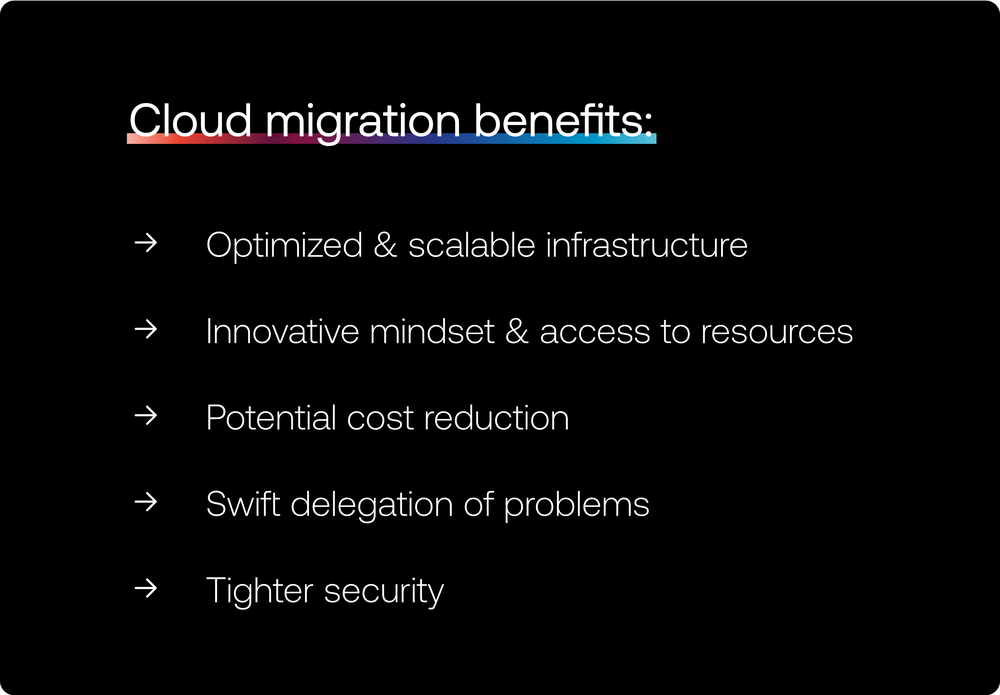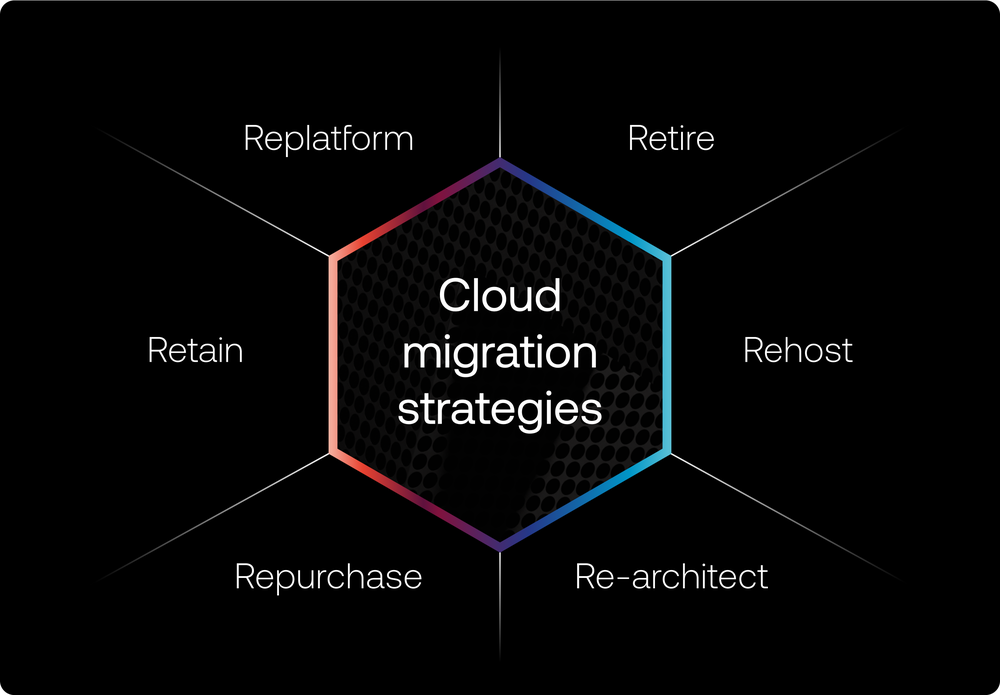
Scalability, optimization, and innovation – these three factors are becoming more and more necessary in order for businesses to grow and thrive. To unlock these benefits, many companies turn to cloud technology to manage their resources in the best way possible, without being tied down to physical data centers.
Cloud technology is nothing new. In fact, it has already become a common part of daily life, even if most people aren't fully aware of it. Such popular solutions like Google Drive, Netflix, or the Adobe suite are all cloud-based services, meaning that they can be accessed anywhere and anytime, with no need to store the files or run the software on your own computer.
The same applies to the business world – now, companies don’t have to maintain their own physical infrastructure to access computing resources like servers, storage, and applications over the internet. Instead, they can invest in a third-party solution that provides these resources through a convenient pay-as-you-go model, ensuring the most efficient use of your assets.
Let’s take a closer look at what cloud technologies have to offer.
There’s no flexibility with a physical infrastructure – whenever the need for capacity rises, you’re held back by its limitations and waste possible opportunities. On the other hand, when the capacity decreases, you’re wasting money by paying for unused resources.
The answer to that problem lies in the cloud environment, where technologies like virtualization and containerization boost flexibility. Virtualization lets you run multiple virtual machines on a single physical server, while containerization isolates applications and their dependencies into lightweight, portable containers. Both make resource management much more efficient and scaling up or down faster and more cost-effective.
Cloud services also bring native capabilities like pay-as-you-go models, giving you the flexibility to adjust resources as needs change. On top of that, abstracting cloud infrastructure can help optimize costs in the long run. While the initial setup might cost more, these strategies usually lead to lower costs per unit over time, offering more control and flexibility – especially when handling complex environments.
In the cloud, your resources can be adjusted as needed, and new services can be adopted in minutes. Its inherent flexibility allows you to adjust your resources as needed, as well as adopt new services, within minutes. It’s a sure way of maximizing efficiency on several fronts, since it also saves the time of IT experts; instead of wasting their energy on managing the computing platforms, they can focus on their core responsibilities that directly affect your revenue.
Building your own infrastructure is a time-consuming task, even if the process itself is smooth sailing. But with the cloud, you can take off in minutes, reducing time-to-market to bare minimum. This technology’s constant and reliable presence, along with the efficiency of virtualization and containerization, gives you the agility that wouldn’t have been possible otherwise.

Innovation starts with the culture, where experimentation is both encouraged and enabled by the internal processes. Sadly, budget restrictions can become an obstacle too difficult to overcome, especially in systems that aren’t scalable.
It’s a different story with the cloud – testing features of new services doesn’t require an upfront investment, and the service itself can be scaled up or shut down at once, depending on the results. This limits financial risks by leaps and bounds while fostering an innovation culture.
Moreover, many cutting-edge services, such as OpenAI, Databricks, Snowflake, and others, are only available on the cloud, providing you with access to innovative tools that would otherwise be out of reach. You can count on cloud providers to keep their technology up-to-date, looking for new ways of gaining a competitive edge over the other providers. Along with the core service, you’ll also gain access to powerful tools and libraries that support the agile way of managing the cloud environment, on top of the option to create your own resources.
Whether you’ll save money by moving to the cloud depends entirely on your business and its needs. Calculations will be necessary to find out how it will benefit your finances, considering:
Forget about distracting your IT experts with the physical infrastructure’s issues. Instead, delegate the problem-solving to the helpdesk, which is often part of the deal with your cloud provider.
Multiple levels of security make you more resistant to hacking efforts. In the cloud environment, your provider stays accountable for the physical infrastructure, while you hold responsibility for the access itself. This shared responsibility security model doesn’t only better protect your business, but also allows you to outsource a myriad of tasks to your partner, who has different resources at hand.
For example, Google Cloud’s security goes way beyond what you'd find at an average private facility. They have a strong perimeter defense system, round-the-clock surveillance, biometric access, and security guards on-site 24/7. Plus, their data centers are protected by six layers of physical security and multiple logical controls on the machines themselves. On top of that, they have disaster recovery plans, emergency backup generators, and data distributed across different locations.
Note that while this can strengthen your overall security, it does mean you lose direct control over the physical security of your assets.

Migrating your applications and data to the new environment has been polished to perfection by now, with several options available, listed from the less to the most impactful:

Moving to the cloud includes risks, but there are hefty rewards waiting for those brave enough to take these steps. Most importantly, it prepares you for the future dictated by scalability and the agile approach, where any business pivots or changes become much easier. All it takes is a careful consideration of your circumstances and needs, and a reliable partner who will guide you through the process.